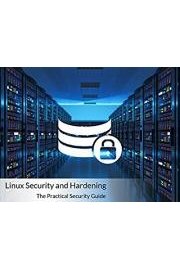


















































-
Channel

Linux Security and Hardening, The Practical Security Guide is an educational show created by Jason Cannon, the founder of LinuxTrainingAcademy.com, to teach viewers how to secure their Linux systems against various cybersecurity threats. The show explores the fundamentals of Linux security, covers an array of practical techniques that can be used to harden a Linux system, and also provides tips on how to stay on top of security best practices.
The show caters to both beginners and experienced Linux users, breaking down complex security concepts into simple, understandable terms. Jason Cannon, a seasoned Linux professional, shares his vast knowledge in the field to help viewers build secure Linux systems from scratch. He starts by covering the basics of digital security, explaining what cybersecurity is and why it's important. He then moves on to cover different types of attacks and vulnerabilities, such as brute force attacks, buffer overflows, and SQL injections.
The show also discusses some common misconceptions about Linux security that need to be debunked. For example, many people believe that because Linux is an open-source operating system, it's inherently more secure than proprietary systems like Windows. While Linux may be more resistant to viruses, it's still susceptible to attacks, particularly if it's not properly secured.
Throughout the show, Jason Cannon shares a plethora of tips and techniques for securing a Linux system. This includes configuring firewalls, securing SSH connections, enabling SELinux, using strong passwords, and much more. In addition to showing viewers how to make their systems more secure, the show also teaches them how to test their security measures. Jason Cannon demonstrates how to conduct security audits and penetration tests to identify potential vulnerabilities.
One of the unique features of Linux Security and Hardening, The Practical Security Guide is the practical approach it takes to teaching Linux security. Jason Cannon doesn't just explain concepts, he shows viewers how to implement them in real-world scenarios. Viewers can expect step-by-step tutorials on how to set up firewalls, secure SSH connections, and configure system settings, making this show an excellent resource for those who like to learn by doing.
Another standout feature of Linux Security and Hardening, The Practical Security Guide is the breadth of topics covered. The show covers a wide range of security-related topics, including network security, file permissions, and user authentication. This makes it an excellent resource for both beginners and experienced Linux users who want to improve their system security.
Finally, the show is delivered in a clear and concise format, making it easy to follow along. Jason Cannon's presentation style is engaging, with a good balance of theory and hands-on demonstrations. The show is well-produced and visually appealing, with high-quality graphics and animations that help reinforce key concepts.
In summary, Linux Security and Hardening, The Practical Security Guide is an excellent resource for anyone who wants to learn how to secure their Linux systems against cyber threats. The show covers a wide range of security-related topics, delivers practical hands-on demonstrations, and is presented in a clear and engaging format. Whether you're a beginner or an experienced Linux user, you'll find plenty of valuable information and tips in this show to help you improve your system's security.
Linux Security and Hardening, The Practical Security Guide is a series that ran for 1 seasons (51 episodes) between and on Jason Cannon - LinuxTrainingAcademy.com


















































